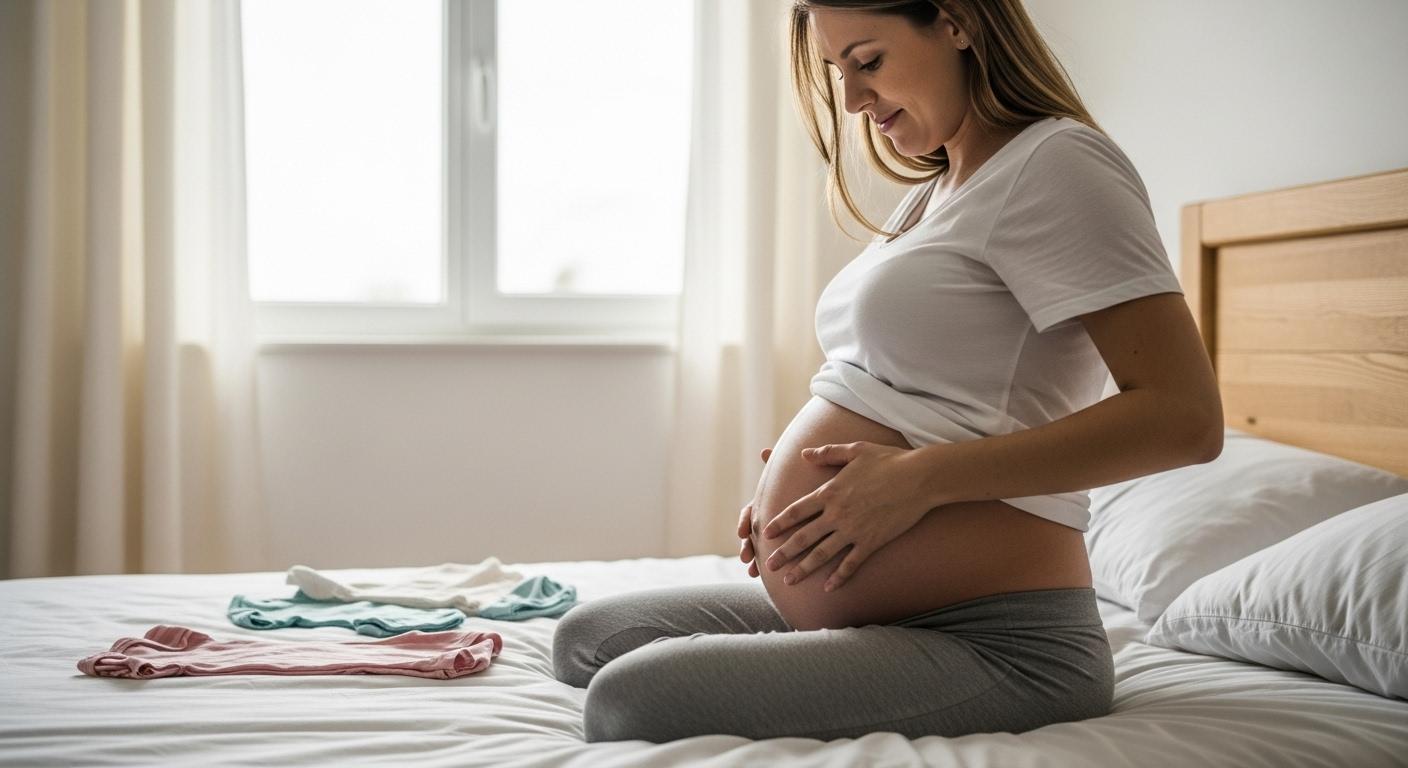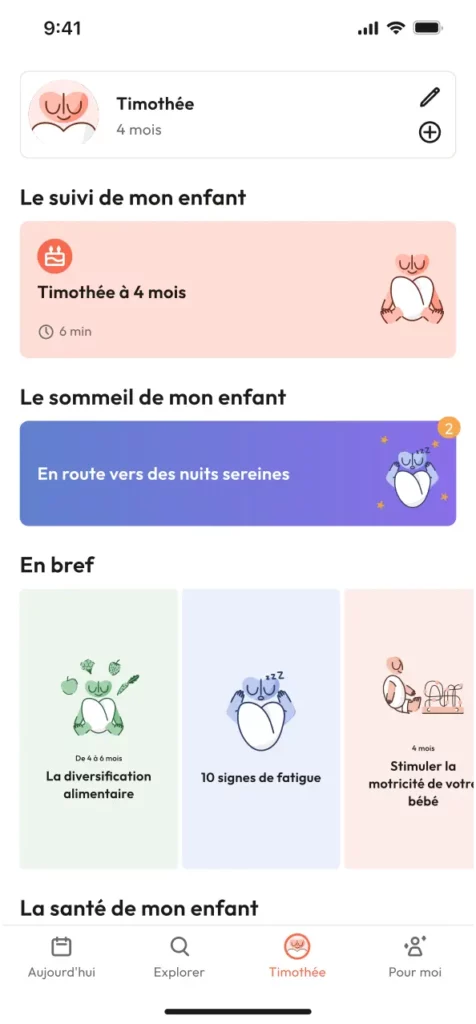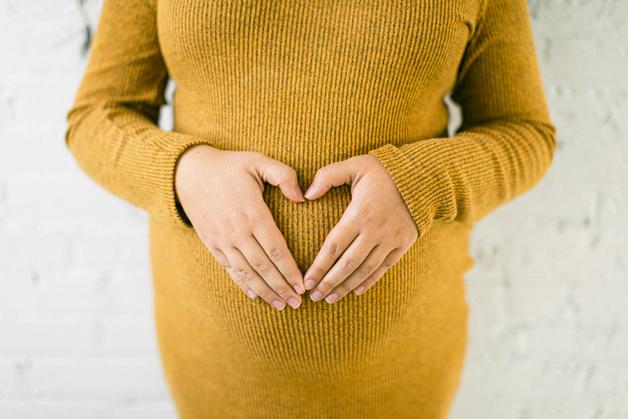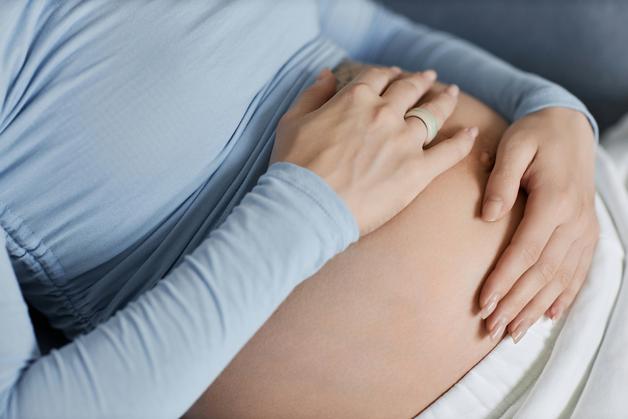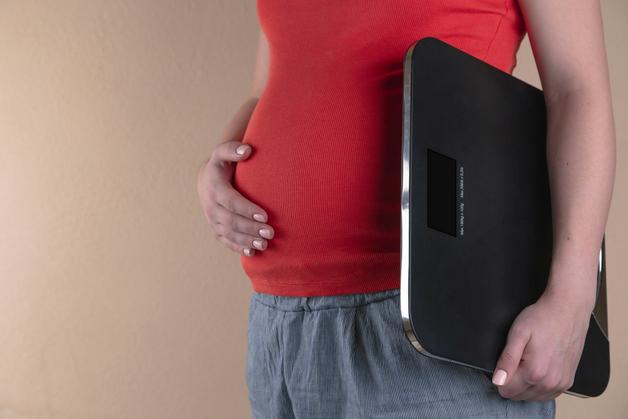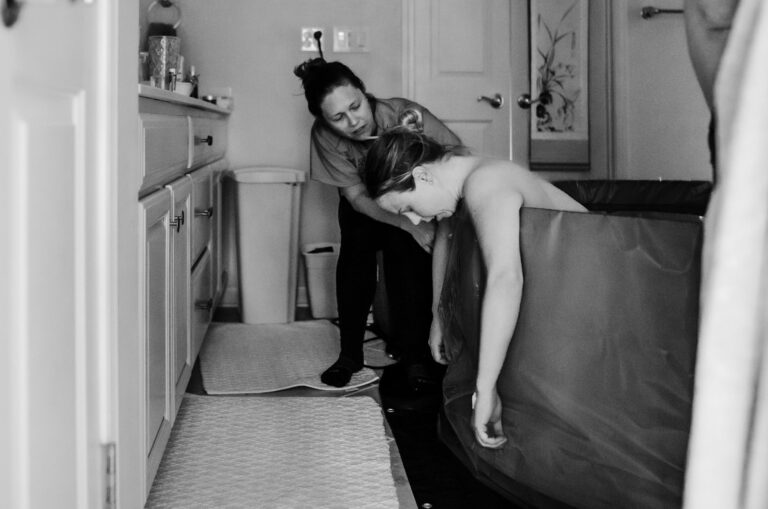Pregnancy belly growth can feel like a mystery one day and a marvel the next. You notice a waistband that once felt roomy now presses a bit. A friend shows sooner or later than you. You wonder whether size equals health and whether the day to day swell is your uterus or simple bloating. Here is the reassurance that anchors everything that follows. Pregnancy belly growth is deeply individual and not a scoreboard for your baby’s health. Objective checks like fundal height and ultrasound take the guesswork out of what your eye alone cannot tell. Your uterus enlarges on a predictable arc. Bloating does not. If something feels off or measurements trend unexpectedly, ask your clinician. Curiosity beats worry.
What pregnancy belly growth means
Pregnancy belly growth is the outward echo of internal expansion. The uterus begins roughly the size of a small pear and ends closer to a watermelon, rising from a pelvic organ to a fully abdominal one. It grows from about 50 grams and seven centimeters early on to near 1000 grams and thirty five centimeters near term. That curve is steady. What you see on the outside also reflects more blood volume, normal fat stores for energy, and a shifting posture as your center of gravity moves forward.
Early in the first trimester, fullness is often gastrointestinal. Progesterone slows gut motility, which means more gas and constipation. A true bump persists and increases week to week. Clinicians follow the internal story with symphysis fundal height and ultrasound rather than daily snapshots in the mirror.
You may be asking yourself a simple question. If my belly looks small or large today, does it matter. Most often the answer is no. Trends across weeks are what matter in clinic.
The main contributors to bump size and shape
Belly shape is a duet between your body and your baby. Sometimes a trio when the placenta joins in.
Baby and placenta factors
Fetal size, presentation and position change the silhouette. Multiples often show earlier. An anterior placenta can soften how kicks feel and change projection. Amniotic fluid volume makes a difference too. Extra fluid, called polyhydramnios, can enlarge the abdomen. Low fluid, called oligohydramnios, can make it appear smaller.Maternal factors
Pre pregnancy BMI, torso length, frame, abdominal muscle tone, and prior pregnancies influence how soon and how prominently you show. A long torso can hide growth until the second trimester. Strong abdominal tone may make the contour compact. Prior pregnancies often lead to earlier showing as connective tissue offers more give. A retroverted uterus can delay early projection without signaling a problem.Measurement context
From about twenty to thirty six weeks, fundal height in centimeters usually approximates gestational weeks with a margin of about two to three centimeters when measured in a consistent way. That is why clinicians prefer tape and data over glances and guesses.
Trimester snapshots of belly changes
First trimester subtle shifts
Nausea. A tight waistband in the evening. Constipation that comes and goes. The uterus stays low in the pelvis, which means most visible change is bloating rather than uterine size. Soft waistbands help. Smaller frequent meals and hydration help too.
Second trimester the bump appears
Many first time parents notice a durable bump between sixteen and twenty weeks. Around eighteen to twenty weeks, the uterine top often rises to the level of the navel. The anatomy ultrasound checks structures and provides a clear look at growth. Skin may show a new vertical line called the linea nigra and sensitivity from gentle stretching.
Photo idea for your memories. A side profile around nineteen weeks in similar clothing and light.
Third trimester peak growth and lightening
Growth accelerates as baby gains weight. Shortness of breath can increase as the uterus nudges the diaphragm. Near term, baby may descend into the pelvis. This drop, called lightening, can ease rib pressure while increasing pelvic pressure. Final belly size varies widely and does not predict birth weight by sight alone. That is why ultrasound and tape stay in the toolkit.
Photo idea. A simple side profile around thirty two weeks or a moment from a fundal height check.
When you start to show and key milestones
You might see a hint of a bump by twelve to sixteen weeks. A clearer curve often arrives by sixteen to twenty weeks in a first pregnancy. After one or more pregnancies, the abdominal wall is more yielding and the bump may show earlier.
Torso length matters. A shorter torso may carry outward and lower. A longer torso has more vertical room. Core strength and posture influence contour. A firm core can create a compact shape. A relaxed belly wall allows earlier outward rounding.
How do you tell bloating from a true bump. Bloating fluctuates with meals, time of day, and bowel habits. A true bump persists and progresses week by week and soon pairs with fetal movements called quickening.
Key markers many experience
- Around week twelve the uterus lifts just above the pubic bone
- Around weeks eighteen to twenty the top of the uterus approaches the navel
- Around weeks twenty four to twenty eight most bumps are visible to others
- Around weeks thirty two to thirty six many see peak outward growth
- After week thirty seven lightening can change the shape again
Week by week growth timeline
Week four to twelve
Early signs often include fatigue, nausea, breast tenderness, and bloating. External change is modest although your waist may feel softer. A dating ultrasound can confirm gestational age and an expected due date.
Week thirteen to twenty
Energy often returns. The anatomy scan around eighteen to twenty two weeks evaluates fetal structures and placenta. Simple weekly photos in consistent clothing give a helpful record without over focusing on daily fluctuations.
Week twenty one to twenty eight
Fetal movement becomes more noticeable and fundal height trends begin to carry clinical meaning. If the tape consistently reads outside expected ranges across visits, clinicians consider growth ultrasound and fluid assessment.
Week twenty nine to forty and beyond
Expect rapid fetal weight gain and shifting contours as baby changes position. Many notice maximum abdominal volume between about twenty seven and thirty two weeks. Call your provider if you see sudden increases with tightness or pain, sudden decreases in size, or a clear reduction in movements.
Measuring and tracking growth
Tape and ultrasound work together to monitor pregnancy belly growth in a calm, methodical way.
Fundal height
Measured from the pubic bone to the top of the uterus in centimeters. From around twenty to thirty six weeks, the number in centimeters often mirrors the gestational week count with a two to three centimeter cushion. Trends across visits matter more than single numbers.Ultrasound metrics
Ultrasound provides fetal biometry. Common measurements include biparietal diameter the width of the head, head circumference, femur length, abdominal circumference, and an estimated fetal weight often reported as EFW. Doppler studies look at blood flow when indicated and a Doppler ultrasound can add detail in specific scenarios.Home friendly ideas
If it helps you feel grounded, take weekly side profile photos in the same outfit and lighting. Use any self tracking as a conversation starter with your clinician rather than a source of pressure.
Smart questions you can bring to appointments
- How is my fundal height trend over time
- What did the biometry and EFW suggest
- Could my body type or baby’s position be altering tape measurements today
Factors that affect size and shape
Maternal influences
A lower pre pregnancy BMI may show earlier while a higher BMI can mask a distinct contour despite normal growth. Torso length, skeletal frame, and muscle tone all sculpt the shape. Prior pregnancies and connective tissue laxity tend to round the bump earlier. Prior surgical scars and diastasis recti separation of the abdominal midline can change mechanics during and after pregnancy. Gentle posture work can reduce swayback and day to day discomfort.
Baby, placenta, and fluid influences
A larger baby, multiples, position and presentation, placental location, and fluid volume all shift the silhouette. Placenta previa changes medical planning. Fibroids can enlarge the abdomen independent of fetal size.
Daily and transient influences
Gas, constipation, a big meal, posture, and the time of day can make an evening belly look different from a morning one. That is normal and short lived.
Belly appearance, skin changes and common myths
Shape variations
High, low, round, compact. All common. Shape reflects torso length, muscle tone, fetal position, and parity. Shape does not predict baby’s sex or well being.
Skin and surface changes
Expect pigment shifts like linea nigra, stretch marks called striae, and a navel that may flatten or gently pop outward. Stretch marks often start purple or reddish then fade over months after birth. Genetics and the rate of stretching do most of the deciding. Mild itching from stretching skin is common. Fragrance free moisturizers, lukewarm showers, and sun protection help comfort. Intense itching on palms and soles in late pregnancy or itching with jaundice warrants prompt review for possible cholestasis.
Persistent myths to set aside
Small bump does not equal small baby. Big bump does not equal big baby. The right tools to assess growth are tape, ultrasound measurements, and pattern of movements rather than appearance alone.
When to seek care
Reach out to your clinician promptly if you notice any of the following
- A belly that stops growing after mid pregnancy or measurements trending low for dates which can point toward intrauterine growth restriction
- Rapid painful abdominal enlargement which can point toward polyhydramnios
- Regular painful contractions or unusual fluid or blood loss or a persistently hard and painful abdomen
- Marked swelling especially face or hands severe headache visual changes or right upper belly pain which can signal hypertensive disease
- Noticeably reduced fetal movement compared with your usual pattern
Your team may confirm dating, check fundal height trends, perform a growth ultrasound, assess amniotic fluid, and use Doppler studies when indicated.
Comfort, clothing and daily care
Posture and ergonomics
Think neutral spine. A gentle pelvic tuck can counter swayback. A supportive maternity belt may help if your clinician agrees. When lifting, bend at the knees and keep loads close.Sleep
Side sleeping often the left can improve comfort. A pillow between the knees and one under the belly can relieve pressure.Clothing
Stretchy waistbands, breathable fabrics, adjustable panels, and a well fitted maternity bra can make long days easier. Compression stockings can lessen heavy legs or swelling.Digestion and hydration
Split meals across the day and keep fluids steady. Fiber rich foods and movement help with constipation and gas.Exercise
Most pregnancies benefit from walking, swimming, and prenatal yoga. Use core work that is gentle on the midline and stop for bleeding dizziness contractions pain or fluid leakage. Your clinician can tailor advice.Skin care
Gentle fragrance free moisturizers and daily sunscreen support comfort and pigment care.
Nutrition, hydration and weight guidance
Calorie needs change modestly
- First trimester often no extra calories are needed beyond balanced intake
- Second trimester about three hundred forty additional calories per day for many
- Third trimester about four hundred fifty additional calories per day for many
Focus on protein, iron, folate, calcium, DHA, fiber, and fluids. Most parents are screened for gestational diabetes between twenty four and twenty eight weeks which helps guide growth management. Total weight gain targets depend on pre pregnancy BMI and are reviewed at prenatal visits.
Special situations
Multiples
Twins and higher order multiples often present with earlier pregnancy belly growth and a higher tape measurement at the same gestational age compared with singleton pregnancies. Monitoring starts sooner and occurs more often.
Body size variation
Higher BMI and lower BMI pregnancies may follow different tape trajectories. Plans are individualized because symphysis fundal height can be harder to interpret at extremes of body size.
Fibroids and prior surgery
Fibroids can increase abdominal size independent of baby’s growth. A prior cesarean scar can alter the way the abdominal wall yields. Both are manageable with tailored surveillance.
Athletic core
A firm abdominal wall can delay showing and may yield a compact bump. A pelvic floor and core physiotherapist can suggest safe core work that respects the linea alba and reduces strain on the midline.
Tracking movement and documenting the journey
Quickening the first felt movements varies with parity and placenta location. An anterior placenta can delay perception without any harm to baby. After twenty eight weeks, many clinicians recommend a simple approach to kick counts tailored to your situation. The key is pattern. If you sense a clear reduction from your normal, get in touch for a check.
Photos and brief notes can be grounding. Consider one photo per week in similar light and clothing and a sentence about how you felt that day.
Postpartum belly and recovery
The uterus begins to shrink quickly after birth. By about two weeks it is often no longer palpable in the abdomen and by six weeks it approaches pre pregnancy size. Lochia postpartum bleeding changes color and flow over days to weeks. Fever foul odor or severe pain deserves a prompt call.
Recovery and core health
Diastasis recti often improves with guided pelvic floor and deep core rehabilitation. A gap larger than roughly two centimeters with weakness suggests more structured support. Avoid crunch type movements until your core and pelvic floor feel steady. Hernias or severe separation should be reviewed for tailored therapy.
Stretch marks fade from vivid to pearly tones over time. Patience and gentle care are your allies.
Key terms parents hear
- pregnancy belly growth the visible enlargement of the abdomen driven mainly by uterine expansion baby placenta and fluid
- fundal height tape measurement from the pubic bone to the top of the uterus used to track growth
- symphysis fundal height the formal name for the same tape measurement
- fetal biometry ultrasound measurements of baby’s size
- biparietal diameter measurement of head width
- head circumference measurement around the head
- femur length thigh bone length used in growth estimates
- estimated fetal weight a calculated weight based on multiple ultrasound measures often abbreviated EFW
- polyhydramnios higher than expected amniotic fluid volume
- oligohydramnios lower than expected amniotic fluid volume
- diastasis recti separation of the abdominal muscles along the midline
- placenta previa placenta that lies over or near the cervical opening
- Doppler ultrasound ultrasound technique that evaluates blood flow
- quickening first noticeable fetal movements
- lightening baby settling deeper into the pelvis late in pregnancy
- gestational age how far along the pregnancy is measured in weeks since the last menstrual period
SEO enriched questions parents often ask
- When will my belly start showing
- Is my bump too big or too small
- What is normal belly size by week
- How do I measure my bump at home
- What is the difference between bloating and a true bump
- Can a small bump mean IUGR
- Can a big belly mean macrosomia
- How do twins change fundal height
- Does an anterior placenta change how I feel kicks
- What do kick counts look like after twenty eight weeks
Why pregnancy belly growth looks different day to day
Bloating changes with meals and bowel habits. Gas and stool have weight and volume. Your posture changes with fatigue and activity. The uterus can shift slightly with fetal movements which you feel as flips or waves. All of this means a morning mirror is not a perfect comparison to an evening selfie. The steady story shows up in clinic with tape and ultrasound and inside your awareness of movement patterns.
Putting pregnancy belly growth in perspective
Here is a simple way to hold both reassurance and vigilance. Enjoy the visible arc of pregnancy belly growth as your body adapts and your baby grows. Use objective checks like fundal height and ultrasound to confirm the trend. Keep a low threshold to call for new pain, sudden size shifts, or decreased movements. That balance keeps you informed and calm.
Key takeaways
- Pregnancy belly growth is highly individual and not a direct measure of fetal health
- Tape and ultrasound do the heavy lifting for monitoring growth and fluid over time
- Bloating can mimic change day to day while the uterus grows on a steady curve
- Body type, core tone, parity, placenta location, and fluid volume shape the silhouette
- Red flags include halted growth after mid pregnancy, rapid painful enlargement, and reduced movements
- Gentle posture work, balanced nutrition, and tailored exercise support comfort and core health
- Your care team is there to guide measurements, answer questions, and adjust plans when needed
- For personalized tips and free child health questionnaires, you can download the application Heloa at https://app.adjust.com/1g586ft8
Repeated quietly and confidently. Pregnancy belly growth varies widely. Measurement trends and your sense of baby’s movements are your best anchors.
Questions Parents Ask
Why does my belly sometimes feel hard? How can I tell Braxton‑Hicks from real labour?
It’s very common for the belly to tighten occasionally, especially later in pregnancy. Braxton‑Hicks (practice) contractions are usually irregular, mildly uncomfortable rather than intensely painful, and often ease if you change position, rest or drink fluids. True labour contractions come at regular intervals, get steadily stronger and closer together, and don’t go away with simple measures. Other signs of labour include a steady increase in pain, fluid leak, bleeding, or a new, persistent change in fetal movements. If you’re unsure or if contractions are regular (for example, about every 5 minutes for an hour), you can contact your care team for advice—they can help decide if an assessment is needed.
How can I measure my bump at home in a useful way?
If tracking helps you feel confident, keep it simple and consistent. Two reliable methods:
- Fundal height style (best between ~20–36 weeks): use a soft tape, empty your bladder, stand straight, and measure from the top of the pubic bone (symphysis) up to the highest point of the belly (the fundus). Record the number in centimetres and the date.
- Belly circumference: measure around the widest part of the abdomen with a soft tape, without compressing the skin.
Whichever method you choose, measure at the same time of day, wearing similar clothing, and repeat weekly. Use your notes or photos as a conversation starter with your clinician rather than a diagnostic tool—small variations day to day are normal.
Does the size of my bump affect how I will give birth or the chance of a cesarean?
Not by appearance alone. External belly size is shaped by many things—baby position, amniotic fluid, placenta, muscle tone and maternal body type—so it doesn’t reliably predict labour or delivery mode. Decisions about cesarean or interventions are based on clinical assessments: fetal position, estimated fetal weight from ultrasound, labour progress, placenta location, prior uterine surgery and maternal or fetal wellbeing. If growth measurements or scans raise questions, your care team will explain options and monitoring so that plans can be tailored to your situation.


